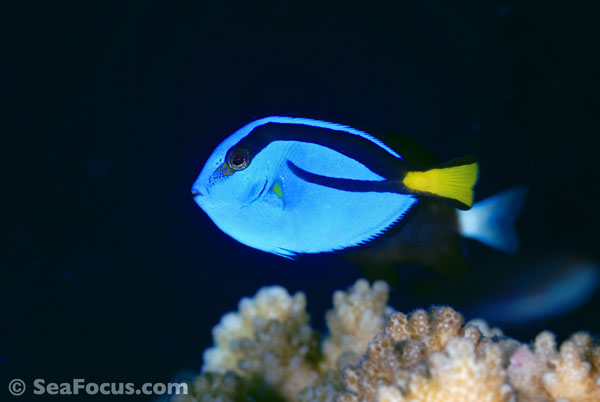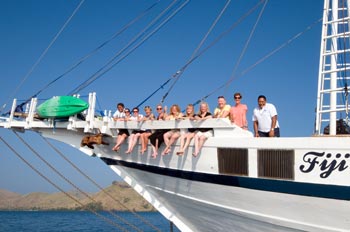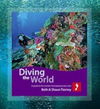|
||||||
|
||||||
|
Diving Fiji | Bligh Waters
|
Liveaboard on Fiji Siren | |||||||||||||||||||
|
Lying across the 180 degree meridian – the international dateline – the Fijian islands hover over the world’s deepest ocean, the mighty Pacific. They also lie just to the southwest of the Coral Triangle with their northern edge rimmed by the third longest barrier reef in the world, the Great Sea Reef. Like much of the Pacific, these reefs were created by ancient volcanic activity but it's the amount of colour you see here that makes them visually different from other popular tropical destinations. Decades ago, the area was nicknamed the soft coral capital of the world, and without a doubt, the reefs display the brightest of hues and tones to justify the title. There are also sheer walls, steep pinnacles and well-lit caves; huge pelagics, schools of big fish and the tiniest of critters, yet the one overriding impression of the dives is the feast of colour. Our cruise started from the northern coast of Viti Levu, then traversed the Bligh Waters to the island of Taveuni before heading south into the Koro Sea. |
 |
|||||||||||||||||||
| Fiji dive photo gallery |
Scuba diving features
|
|||||||||||||||||||
 |
||||||||||||||||||||
| INFORMATION |
EXPLORE more of Fiji
|
|||||||||||||||||||
|
PROS and CONS |
||||||||||||||||||||
|
SCUBA DIVING |
||||||||||||||||||||
| OPINION Our trip was in September 2016, so only a few months after the devastating Cyclone Winston. Although our cruise started from the area most affected by the cyclone, we saw little damage to the reefs. However, we did find reduced levels of visibilty and the water seemed to be significantly colder than expected. Despite that, the dives were excellent and the trip was a great one. |
||||||||||||||||||||
|
|
|
|||||||||||||||||||






















